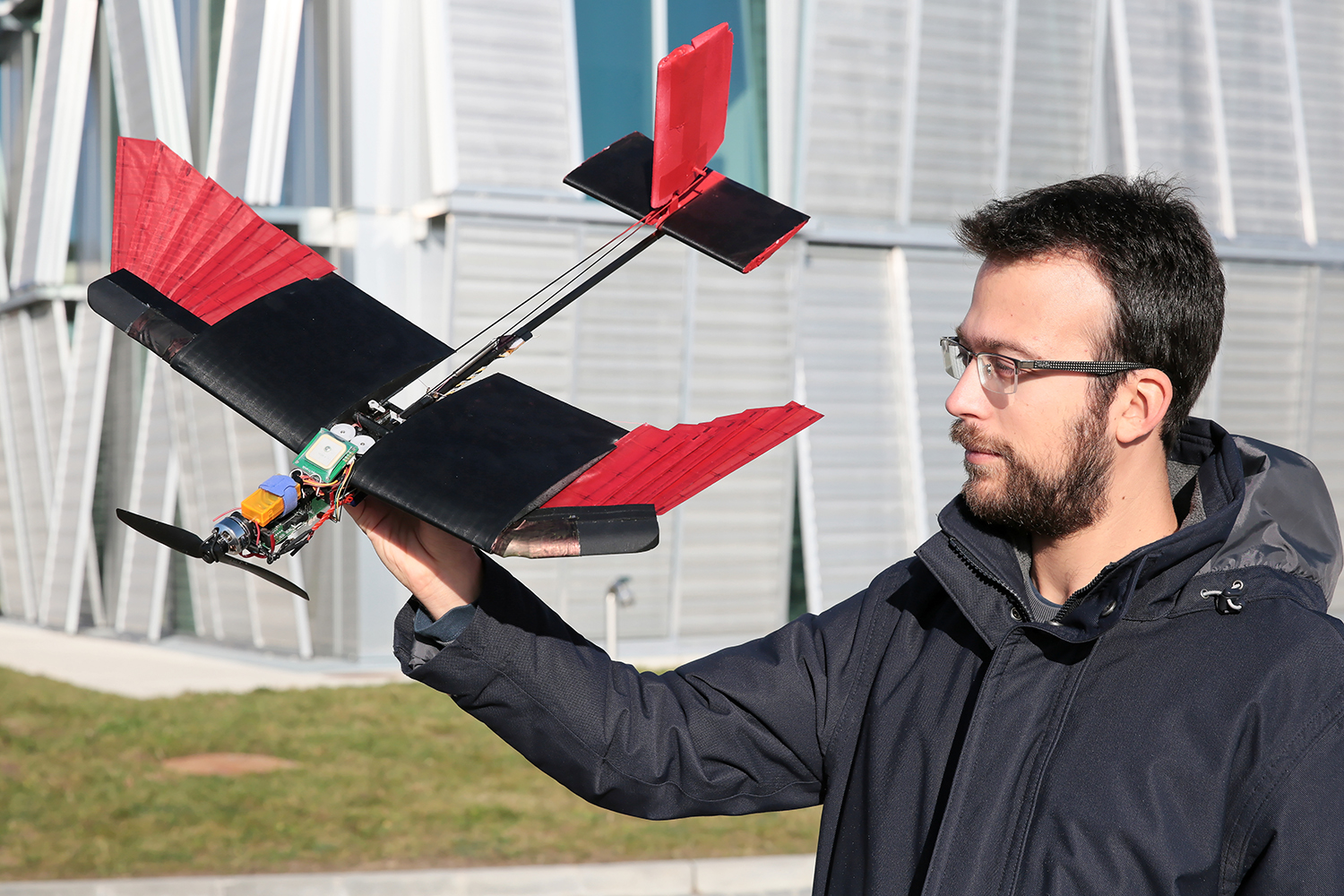“Winged drones, just like larger-scale airplanes, are designed to efficiently fly in specific conditions,” Dario Floreano, head of LIS and one of the researchers on the project, told Digital Trends. Helicopters, for example, are optimized for lower speeds and high maneuverability, while broad-winged planes can more readily tackle strong headwinds.
“On the other hand,” Floreano said, “birds can adapt to different flight requirements, such as flying in strong winds or flying between branches, by changing the shape of their wings. They reduce wind resistance by retracting their feathers and they perform agile maneuvers at lower speed by spreading out feathers.”
The LIS researchers sought to achieve this versatility and energy efficiency in their drone, so they began experimenting with wings with birdlike features. By replacing the rigid wings of conventional drones with feathered and foldable ones, the LIS drone achieves similar capabilities to those found in the animal kingdom, allowing the drone to pick up speed by folding its wings and increase maneuverability by unfolding them.
“Feathered morphing wings could provide an energetic and performance advantage to drones that are required to fly over long distances and also in confined spaces,” Floreano said. “This will probably be the case for cargo drones that will have to fly at high speed over several tens of miles, and also precisely take off and land in confined areas, possibly between buildings and on small landing areas that require agility and precision.”
And, like the wings of birds, bats, and insects, the drone’s wings can be folded to occupy less space during storage or transport.
Floreano and his team are now looking at implementing more avian-inspired designs into their drones. “We are already considering extending this design principle to wings that can be actuated for flapping, for multiple types of locomotion, or simply for increased agility,” he said.
A paper detailing the research was published this month in the journal Interface Focus.




